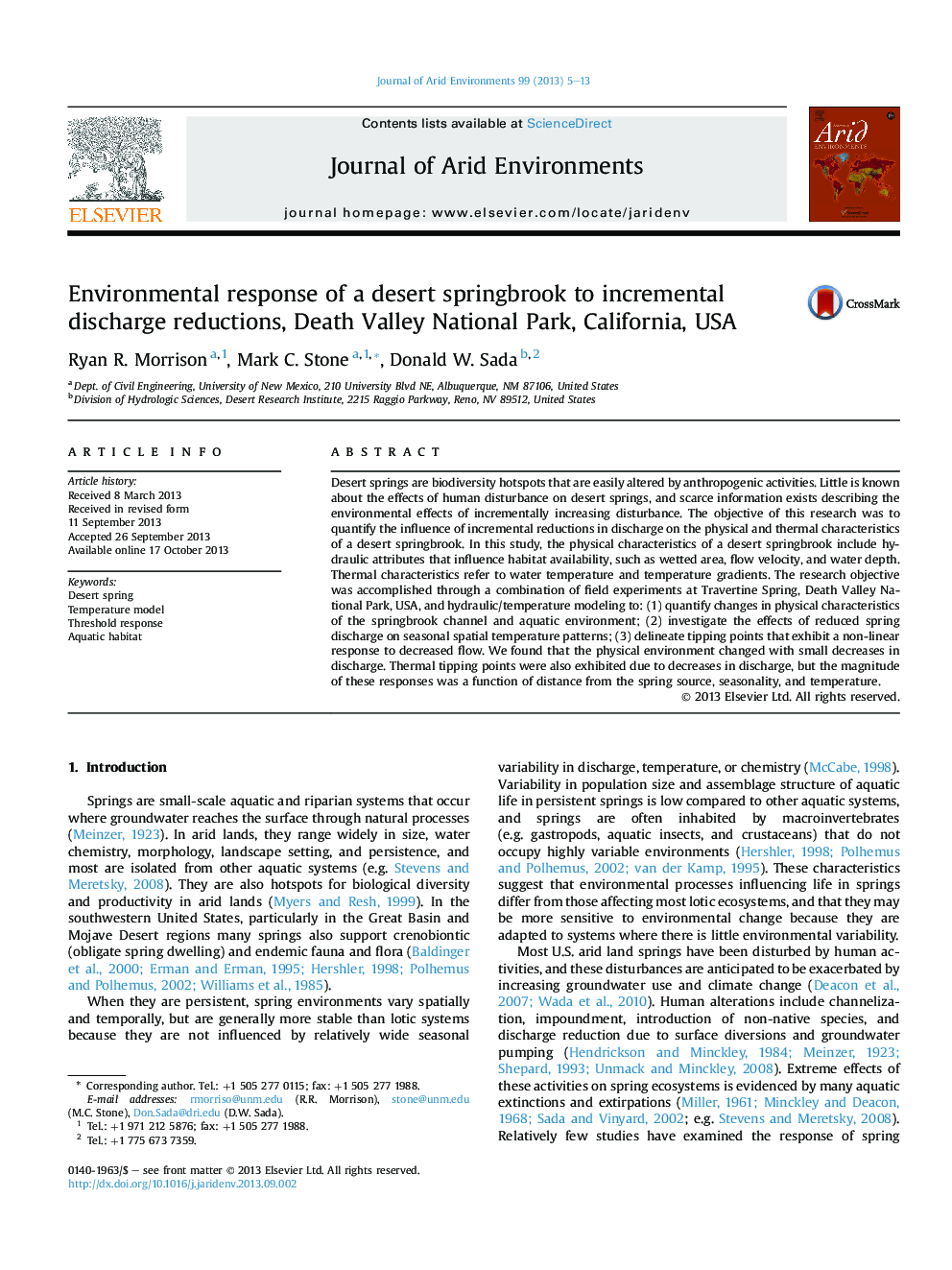| کد مقاله | کد نشریه | سال انتشار | مقاله انگلیسی | نسخه تمام متن |
|---|---|---|---|---|
| 4393076 | 1618258 | 2013 | 9 صفحه PDF | دانلود رایگان |

• Controlled discharge manipulations were performed for a small desert spring.
• Impacts to habitat characteristics were studied using a hydraulic-temperature model.
• Temporal and spatial temperature profiles were examined.
• Small changes in discharge decreased available physical habitat.
• Non-linear thermal responses depended on flow reduction, seasonality, and distance from source.
Desert springs are biodiversity hotspots that are easily altered by anthropogenic activities. Little is known about the effects of human disturbance on desert springs, and scarce information exists describing the environmental effects of incrementally increasing disturbance. The objective of this research was to quantify the influence of incremental reductions in discharge on the physical and thermal characteristics of a desert springbrook. In this study, the physical characteristics of a desert springbrook include hydraulic attributes that influence habitat availability, such as wetted area, flow velocity, and water depth. Thermal characteristics refer to water temperature and temperature gradients. The research objective was accomplished through a combination of field experiments at Travertine Spring, Death Valley National Park, USA, and hydraulic/temperature modeling to: (1) quantify changes in physical characteristics of the springbrook channel and aquatic environment; (2) investigate the effects of reduced spring discharge on seasonal spatial temperature patterns; (3) delineate tipping points that exhibit a non-linear response to decreased flow. We found that the physical environment changed with small decreases in discharge. Thermal tipping points were also exhibited due to decreases in discharge, but the magnitude of these responses was a function of distance from the spring source, seasonality, and temperature.
Journal: Journal of Arid Environments - Volume 99, December 2013, Pages 5–13